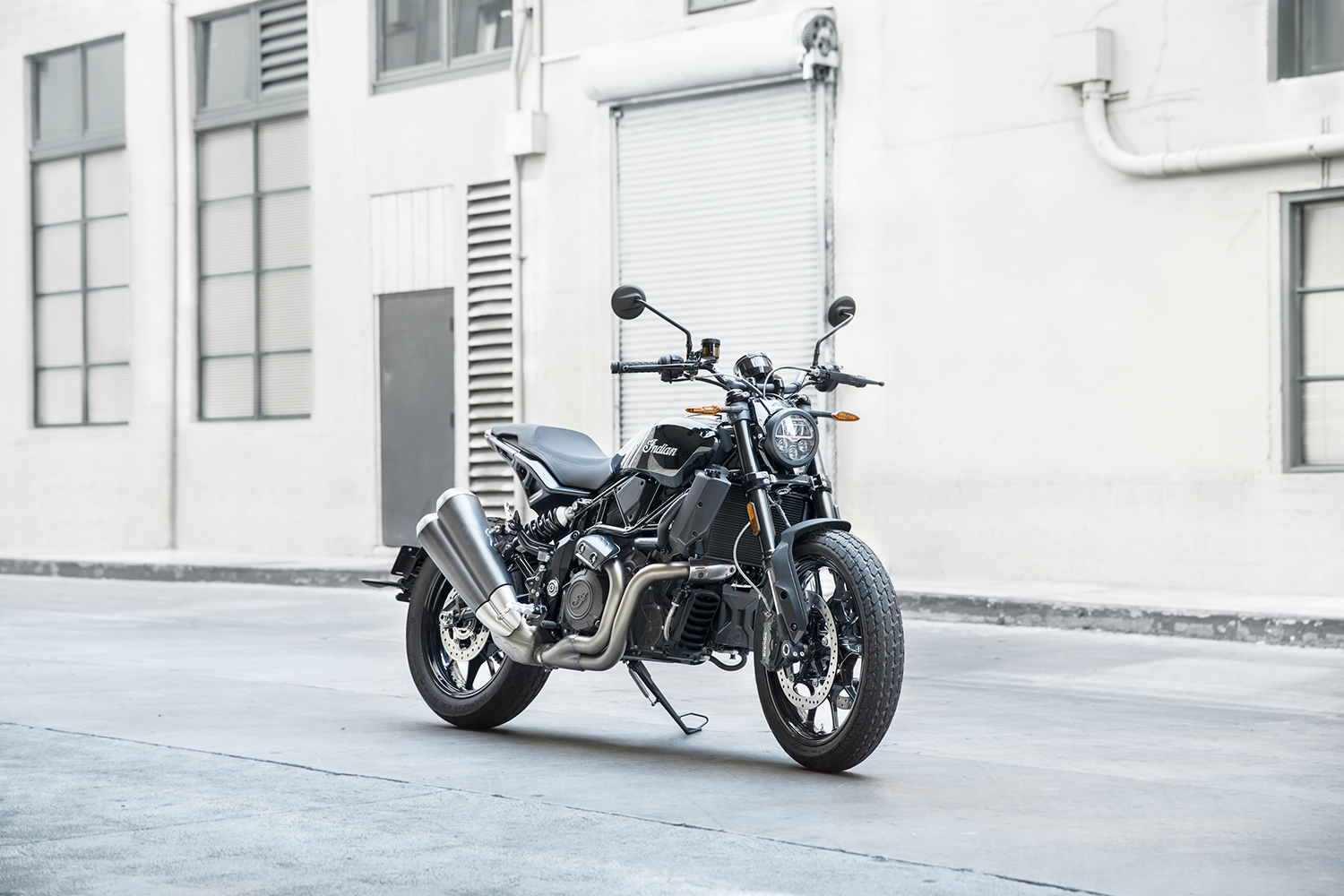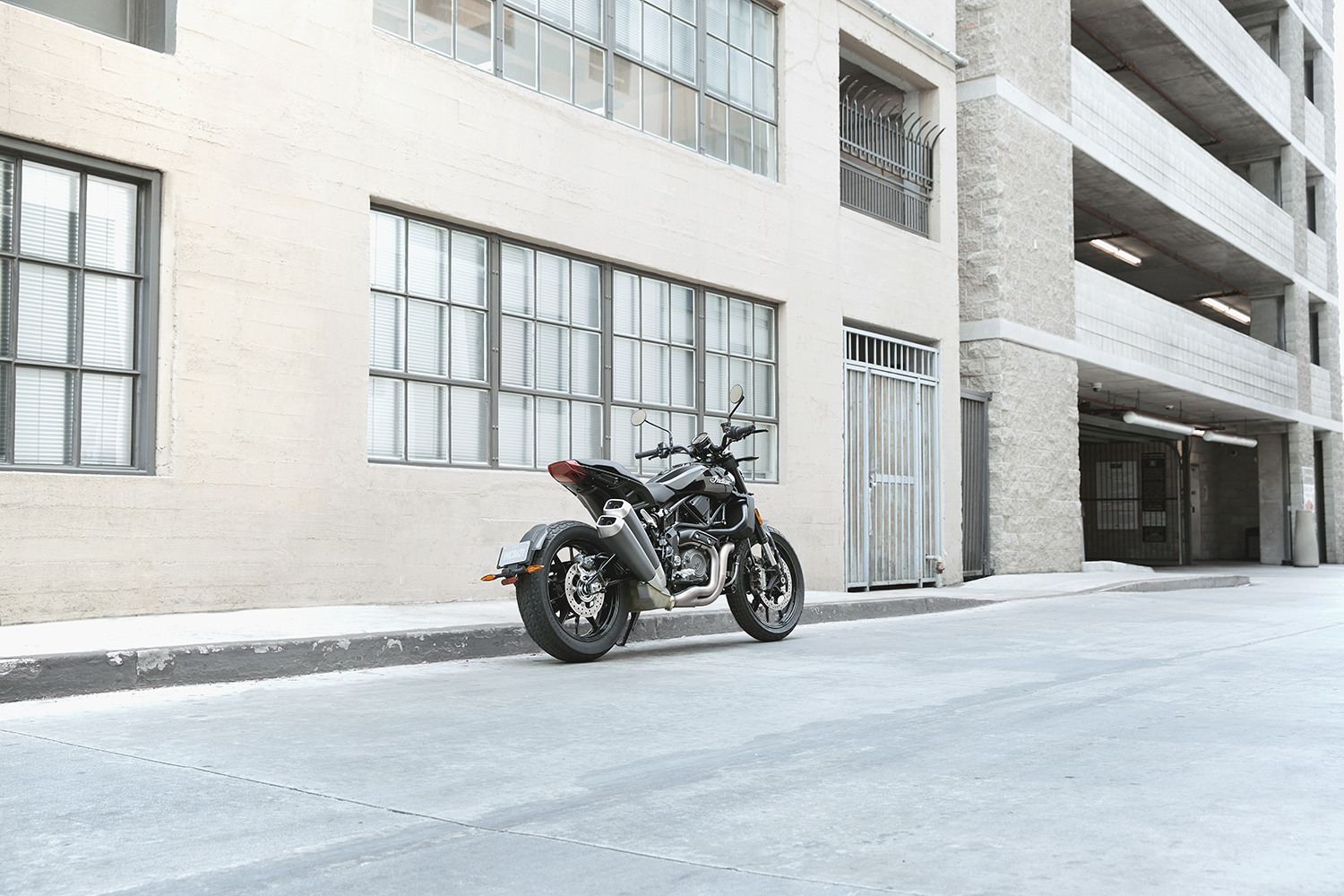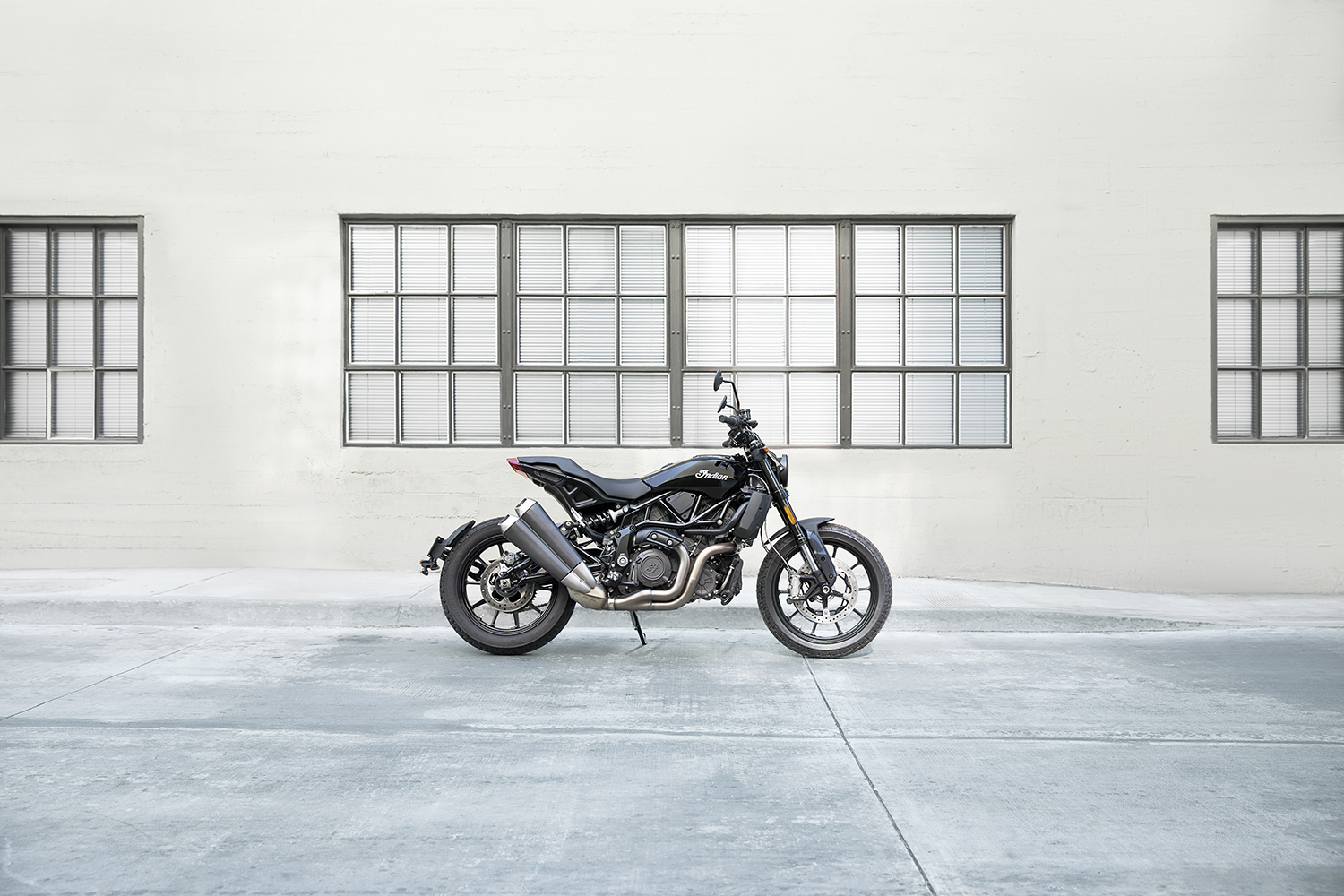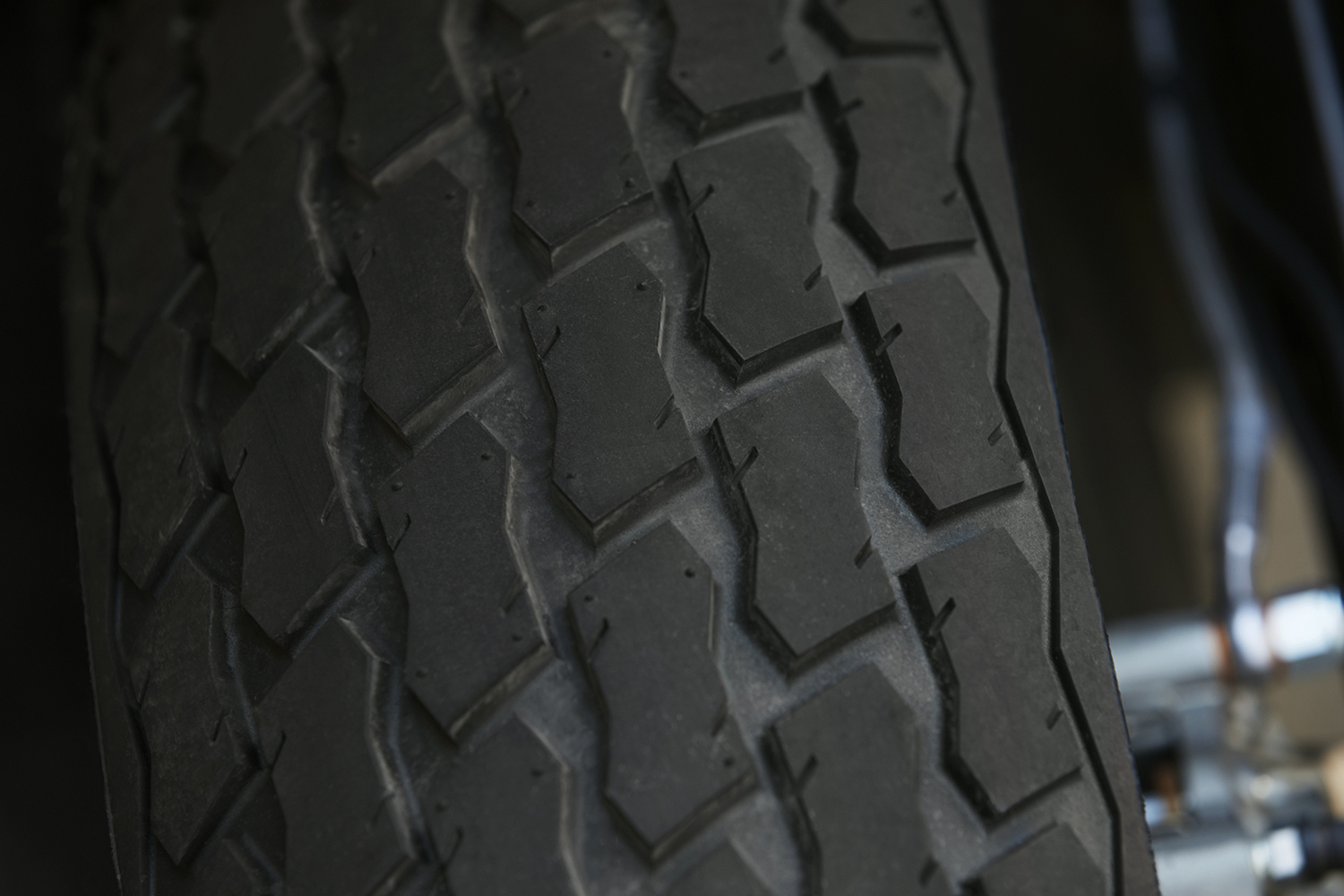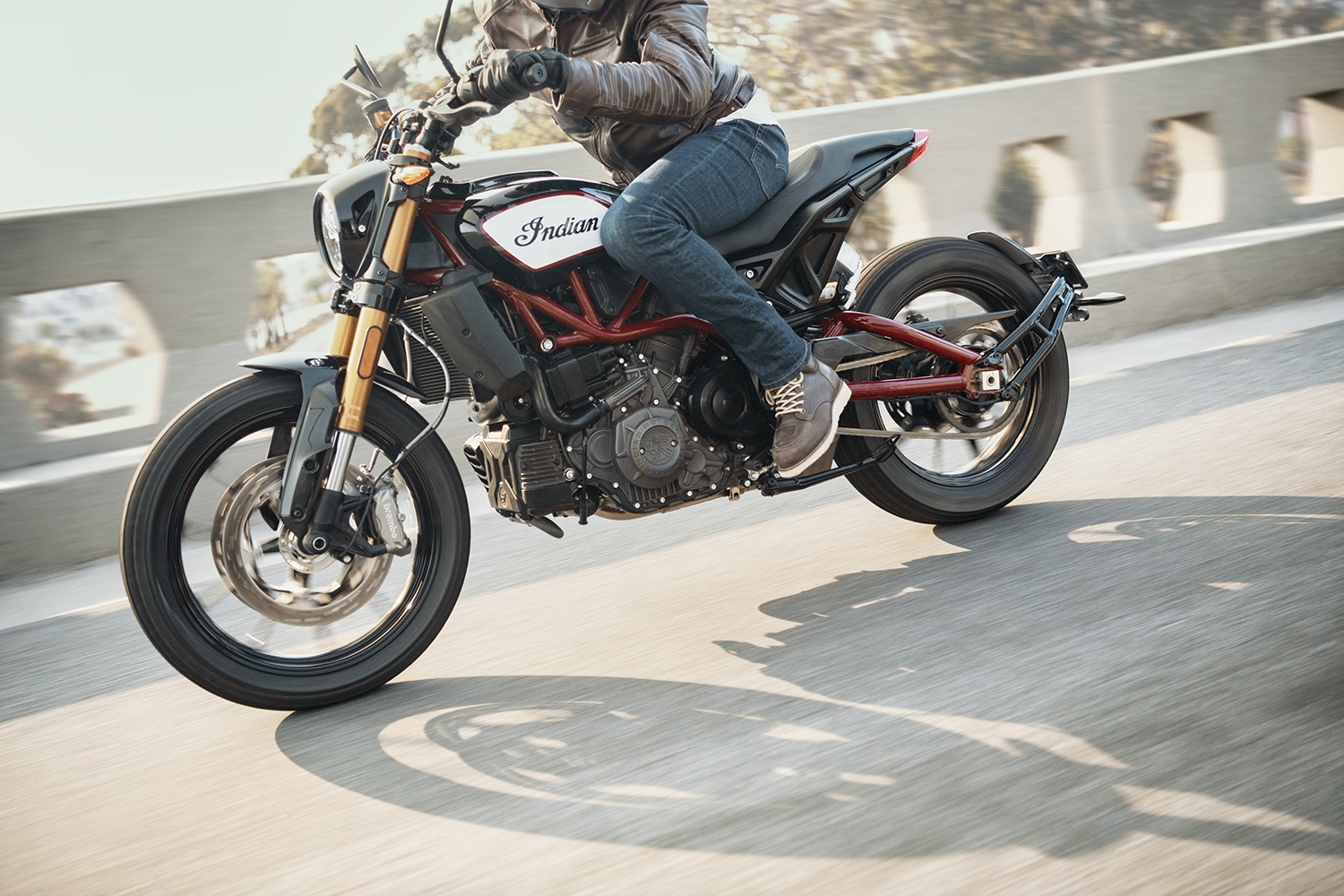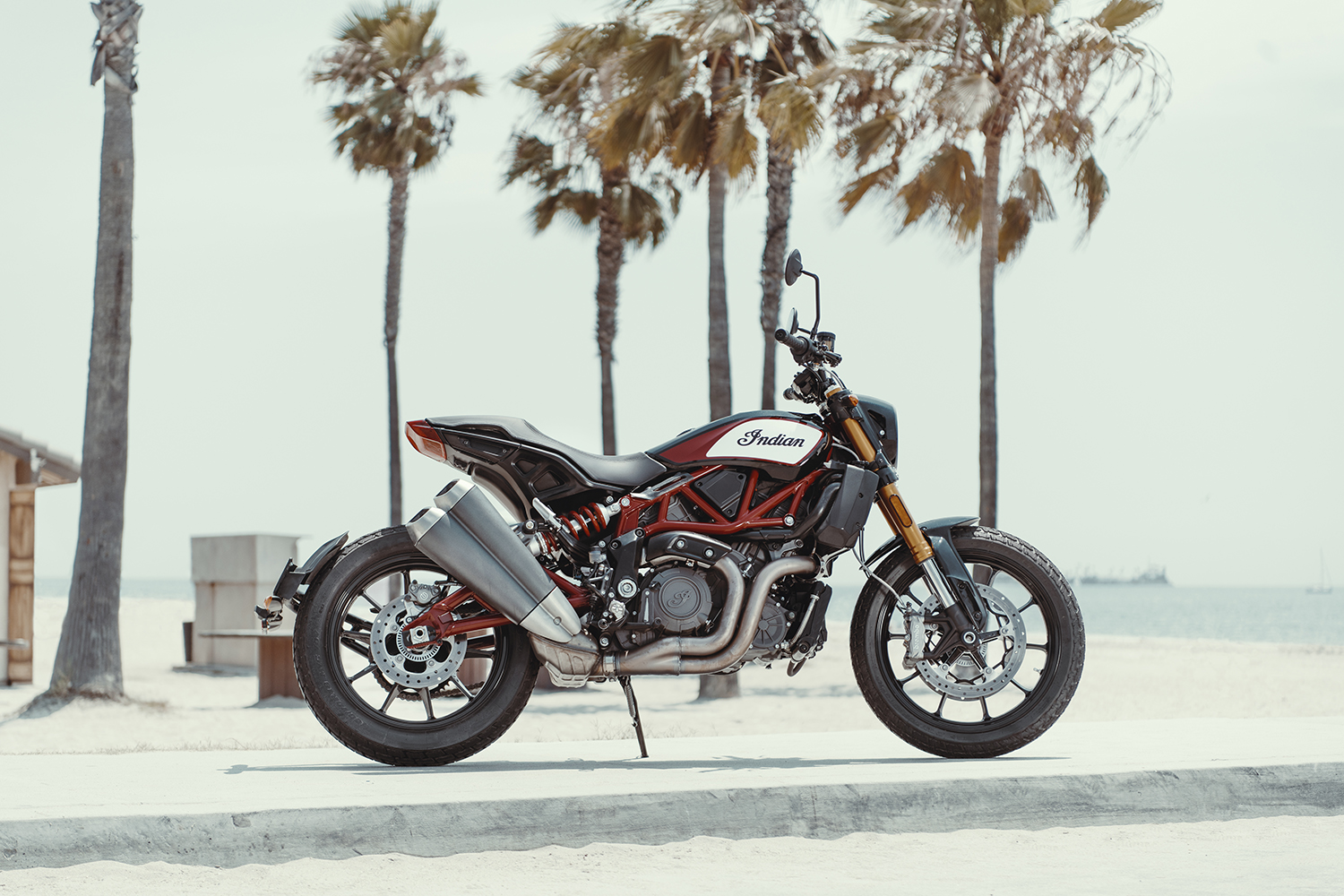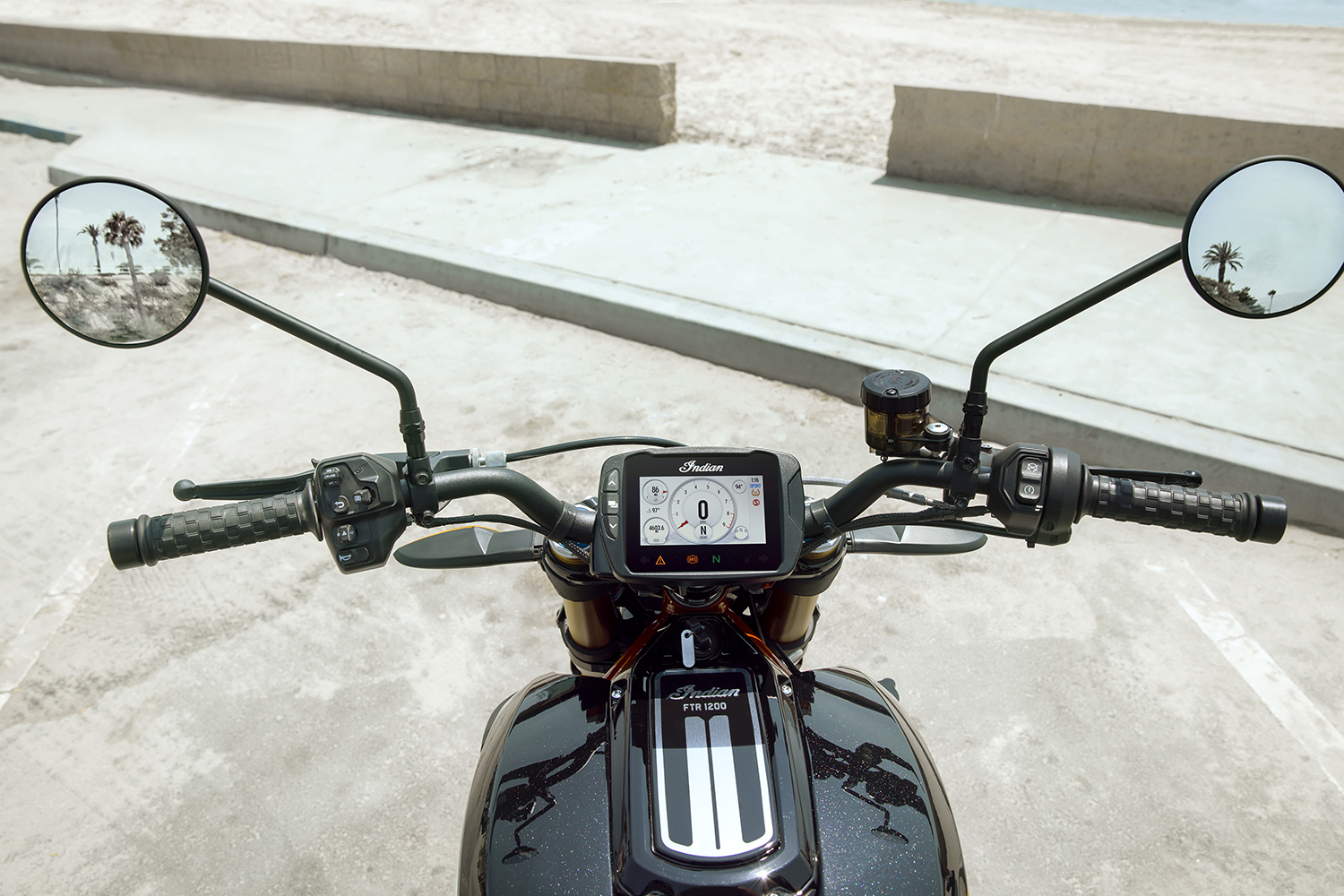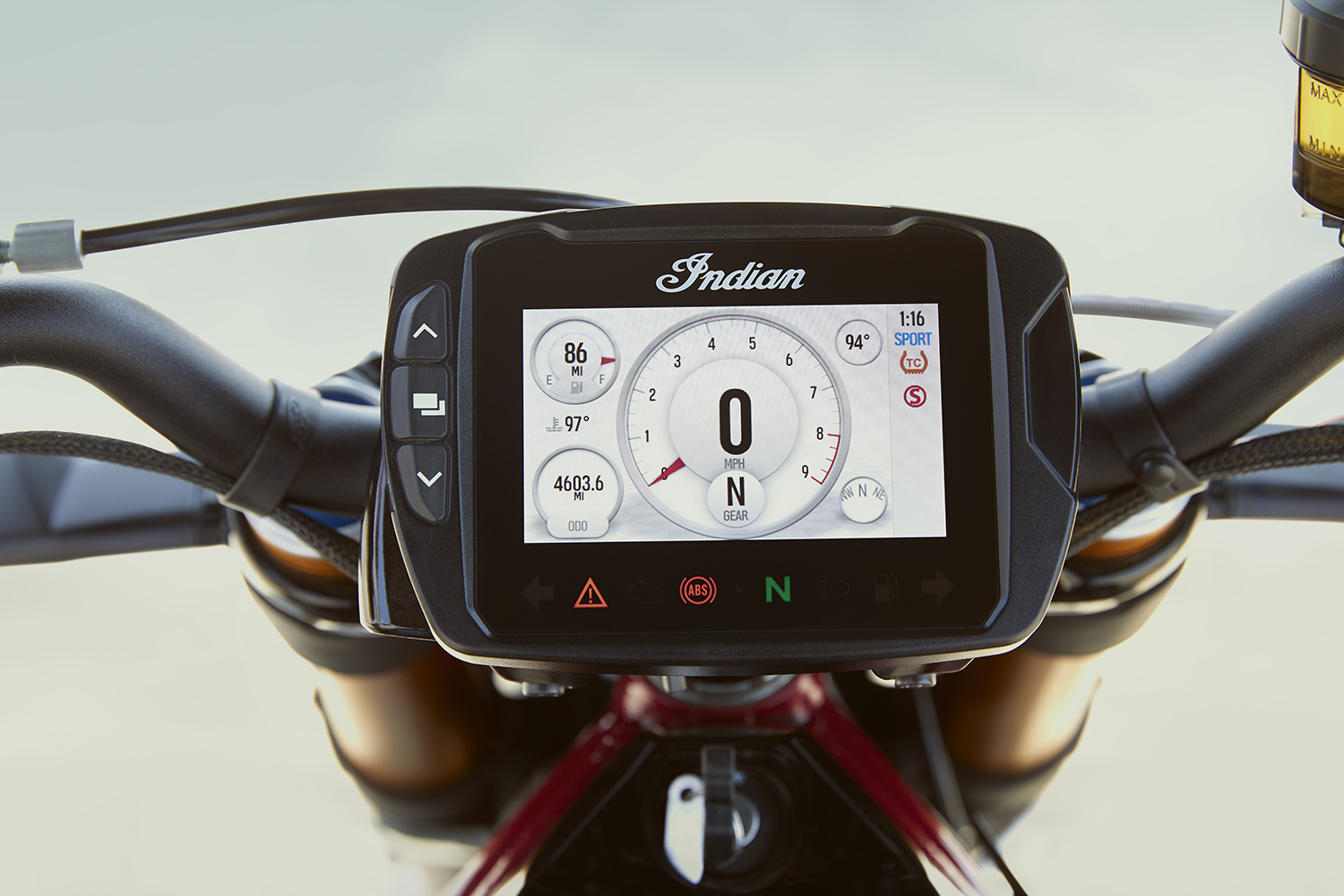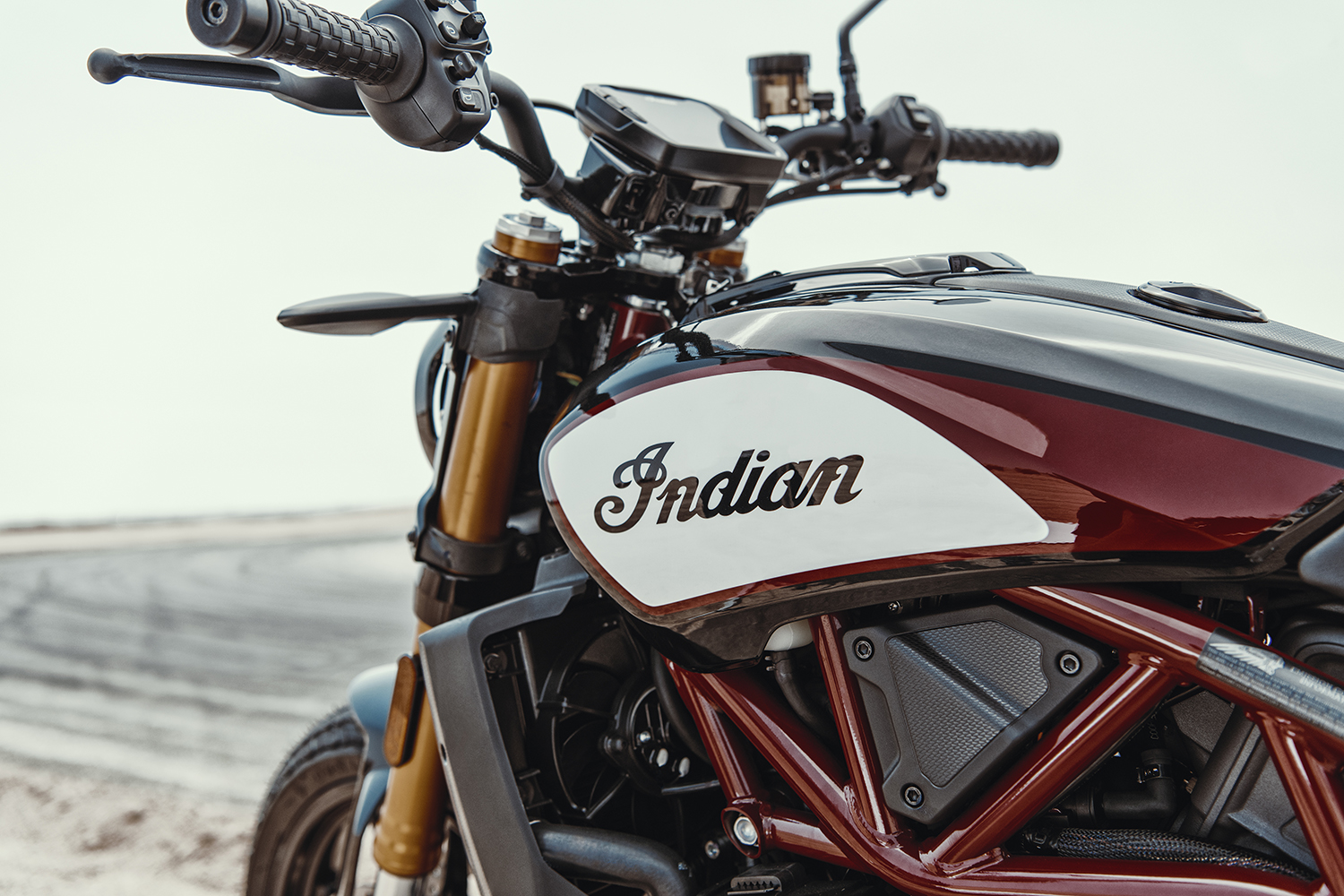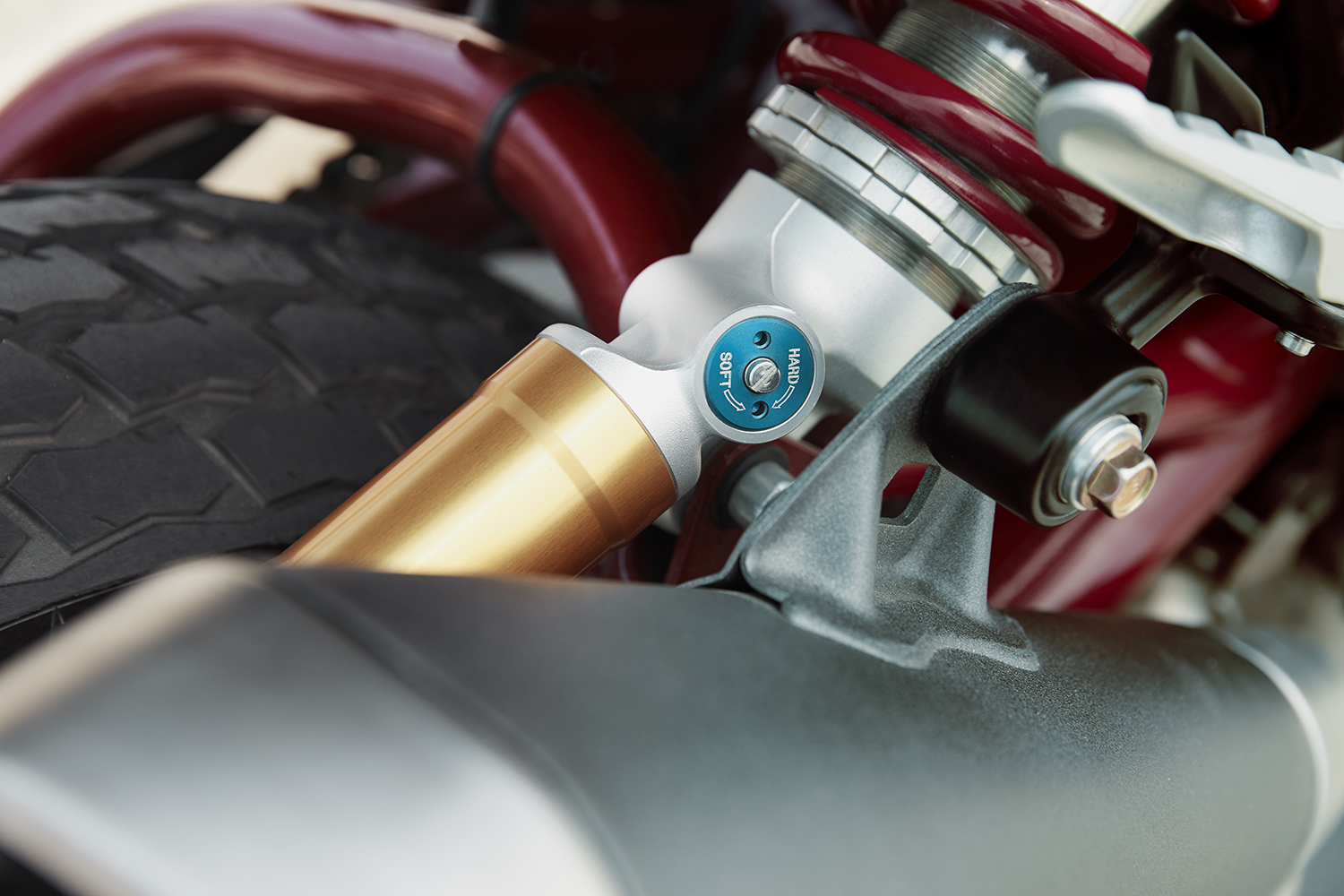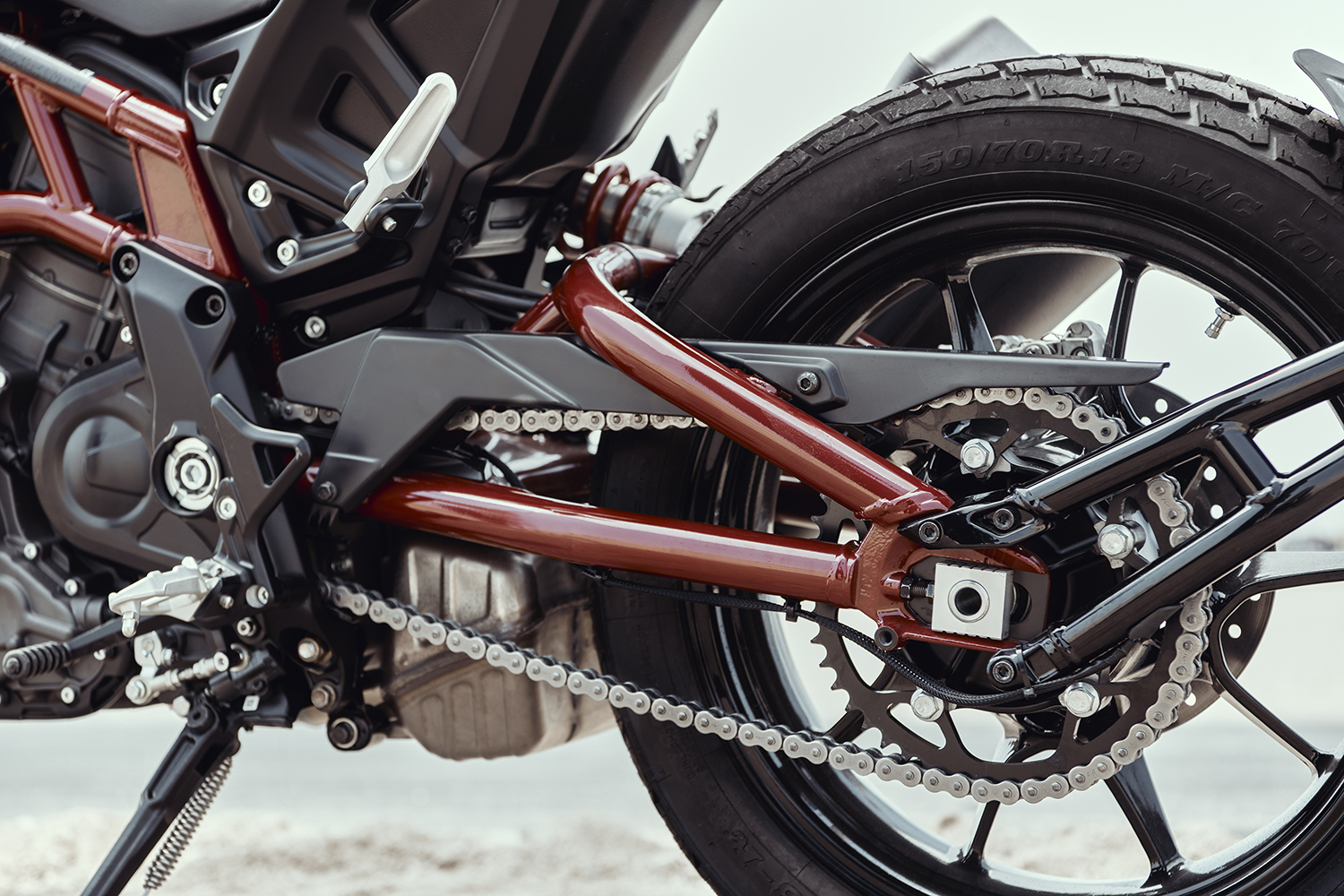There has never been a motorcycle quite like Indian’s FTR 1200. Though other built-for-the-street racers exist, the FTR 1200 is in another class. It’s not a road racer, a MotoGP clone, or an endurance off-roader ready for Dakar. Indian’s FTR 1200 is a
Two years ago, Indian showed off its brand new flat-track race bike and ever since, has dominated the sport. It’s racked up win after win after win. It’s won so much that fans started clamoring at Indian’s gates to plead with the company’s higher-ups to build one for the masses. Which they did — sort of — with a customer version of the FTR 750. It cost $50,000 a pop and was very much not street legal. Customer interest, however, never ceased and Indian took notice and has finally unveiled a road-legal FTR 1200.
Built around Indian’s 1,203cc V-Twin engine, the 120-horsepower upright flat-tracker looks like a bare-knuckle brawler come to life and debuts a host of “firsts” for the rebirthed company. Of those firsts, the most obvious is the motorcycle’s stance. With a trellis frame and pegs that sit behind the rider’s posterior, the FTR 1200 is most definitely not part of Indian’s cruiser lineup. This is a motorcycle meant to be tamed on the dirt or on your favorite winding road.
Ensuring that both rider and machine come out the other side of said curves is a motorcycle with the parts to back up the looks. Brembo brakes are featured both front and rear, as well as fully adjustable shocks. Specially designed tires allow the FTR 1200 both rugged capability, all while never sacrificing adhesion when you want to drop a knee.
Creature comforts also abound, including an optional LED display, LED lighting, ABS, Lean-Angle traction control, Wheelie Mitigation, and three selectable riding modes on the FTR 1200 S model. That’s not to say these are limp-wristed replicas of the brand’s race bikes. In fact, Indian’s Wrecking Crew had a hand in developing the motorcycles with Jared Mees, the flat track champion, stating, “This is as close to my race bike as I’ve ever felt on the street.”
Now comes the price. You’d expect the FTR 1200 to be something that cost an arm, a leg, your right index finger, and your first born, just like other “race machines for the street.” Thankfully, you’d be positively wrong. Indian knew if it wanted to attract new customers, ensnarl old ones, and capture imaginations, the company couldn’t make the FTR 1200 only for the uber-wealthy. That’s why, for the standard model, the price starts at just $12,999. For those wanting a little bit more, the FTR 1200 S will only set you back $14,999. And even then, that’s a hell of a deal.
The motorcycle won’t hit showrooms for a little while, but we’ll get our first real taste soon. You’ll want to stay tuned. This one is going to be a wheelie monster.
Editors' Recommendations
- Indian Motorcycle, Roland Sands Design collaborate on special edition 2024 FTR x RSD Super Hooligan
- Look out Harley-Davidson, Indian’s new Sport Chief is up for a fight
- Indian Motorcycle’s All-New 2020 Challenger Redefines the Classic American Bagger
